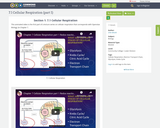
49 Results


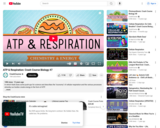
In which Hank does some push-ups for science and describes the "economy" of cellular respiration and the various processes whereby our bodies create energy in the form of ATP.
Chapters:
1) Cellular Respiration
2) Adenosine Triphosphate
3) Glycolysis
A) Pyruvate Molecules
B) Anaerobic Respiration/Fermentation
C) Aerobic Respiration
4) Krebs Cycle
A) Acetyl COA
B) Oxaloacetic Acid
C) Biolography: Hans Krebs
D) NAD/FAD
5) Electron Transport Chain
6) Check the Math
Review
- Subject:
- Biology
- Life Science
- Material Type:
- Lecture
- Provider:
- Complexly
- Provider Set:
- Crash Course Biology (2012)
- Date Added:
- 03/12/2012

Biology is designed for multi-semester biology courses for science majors. It is grounded on an evolutionary basis and includes exciting features that highlight careers in the biological sciences and everyday applications of the concepts at hand. To meet the needs of today’s instructors and students, some content has been strategically condensed while maintaining the overall scope and coverage of traditional texts for this course. Instructors can customize the book, adapting it to the approach that works best in their classroom. Biology also includes an innovative art program that incorporates critical thinking and clicker questions to help students understand—and apply—key concepts.
- Subject:
- Biology
- Life Science
- Material Type:
- Full Course
- Provider:
- Rice University
- Provider Set:
- OpenStax College
- Date Added:
- 08/22/2012
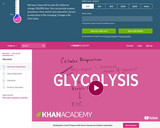
This 13-minute video lesson provides an overview of glycolysis. [Biology playlist: Lesson 24 of 71].
- Subject:
- Biology
- Life Science
- Material Type:
- Lecture
- Provider:
- Khan Academy
- Provider Set:
- Khan Academy
- Author:
- Salman Khan
- Date Added:
- 05/18/2012

This 17-minute video lesson looks at oxidation and reduction in cellular respiration. It Reconciles the biology and chemistry definitions of oxidation and reduction. [Biology playlist: Lesson 23 of 71].
- Subject:
- Biology
- Life Science
- Material Type:
- Lecture
- Provider:
- Khan Academy
- Provider Set:
- Khan Academy
- Author:
- Salman Khan
- Date Added:
- 05/18/2012

- Subject:
- Biology
- Life Science
- Material Type:
- Unit of Study
- Provider:
- Rice University
- Provider Set:
- OpenStax College
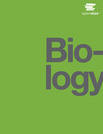
Biology is designed for multi-semester biology courses for science majors. It is grounded on an evolutionary basis and includes exciting features that highlight careers in the biological sciences and everyday applications of the concepts at hand. To meet the needs of today’s instructors and students, some content has been strategically condensed while maintaining the overall scope and coverage of traditional texts for this course. Instructors can customize the book, adapting it to the approach that works best in their classroom. Biology also includes an innovative art program that incorporates critical thinking and clicker questions to help students understand—and apply—key concepts.
- Subject:
- Applied Science
- Material Type:
- Module
- Date Added:
- 07/10/2017
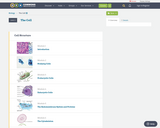
- Subject:
- Biology
- Life Science
- Material Type:
- Unit of Study
- Provider:
- Rice University
- Provider Set:
- OpenStax College

By the end of this section, you will be able to:Discuss the ways in which carbohydrate metabolic pathways, glycolysis, and the citric acid cycle interrelate with protein and lipid metabolic pathwaysExplain why metabolic pathways are not considered closed systems
- Subject:
- Applied Science
- Biology
- Life Science
- Material Type:
- Module
- Date Added:
- 07/10/2017
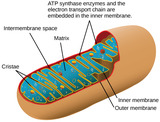
By the end of this section, you will be able to:Discuss the importance of electrons in the transfer of energy in living systemsExplain how ATP is used by the cell as an energy source
- Subject:
- Applied Science
- Biology
- Life Science
- Material Type:
- Module
- Author:
- Tina B. Jones
- Date Added:
- 08/16/2019

By the end of this section, you will be able to:Discuss the importance of electrons in the transfer of energy in living systemsExplain how ATP is used by the cell as an energy source
- Subject:
- Applied Science
- Biology
- Life Science
- Material Type:
- Module
- Date Added:
- 07/10/2017

By the end of this section, you will be able to:Describe the overall result in terms of molecules produced in the breakdown of glucose by glycolysisCompare the output of glycolysis in terms of ATP molecules and NADH molecules produced
- Subject:
- Applied Science
- Biology
- Life Science
- Material Type:
- Module
- Date Added:
- 07/10/2017

By the end of this section, you will be able to:Describe the overall result in terms of molecules produced in the breakdown of glucose by glycolysisCompare the output of glycolysis in terms of ATP molecules and NADH molecules produced
- Subject:
- Applied Science
- Biology
- Life Science
- Material Type:
- Module
- Author:
- Tina B. Jones
- Date Added:
- 08/16/2019

- Subject:
- Applied Science
- Biology
- Life Science
- Material Type:
- Module
- Author:
- Tina B. Jones
- Date Added:
- 08/16/2019

- Subject:
- Applied Science
- Biology
- Life Science
- Material Type:
- Module
- Date Added:
- 07/10/2017
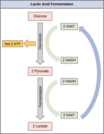
By the end of this section, you will be able to:Discuss the fundamental difference between anaerobic cellular respiration and fermentationDescribe the type of fermentation that readily occurs in animal cells and the conditions that initiate that fermentation
- Subject:
- Applied Science
- Biology
- Life Science
- Material Type:
- Module
- Author:
- Tina B. Jones
- Date Added:
- 08/16/2019

By the end of this section, you will be able to:Discuss the fundamental difference between anaerobic cellular respiration and fermentationDescribe the type of fermentation that readily occurs in animal cells and the conditions that initiate that fermentation
- Subject:
- Applied Science
- Biology
- Life Science
- Material Type:
- Module
- Date Added:
- 07/10/2017
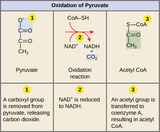
By the end of this section, you will be able to:Explain how a circular pathway, such as the citric acid cycle, fundamentally differs from a linear pathway, such as glycolysisDescribe how pyruvate, the product of glycolysis, is prepared for entry into the citric acid cycle
- Subject:
- Applied Science
- Biology
- Life Science
- Material Type:
- Module
- Author:
- Tina B. Jones
- Date Added:
- 08/16/2019

By the end of this section, you will be able to:Explain how a circular pathway, such as the citric acid cycle, fundamentally differs from a linear pathway, such as glycolysisDescribe how pyruvate, the product of glycolysis, is prepared for entry into the citric acid cycle
- Subject:
- Applied Science
- Biology
- Life Science
- Material Type:
- Module
- Date Added:
- 07/10/2017